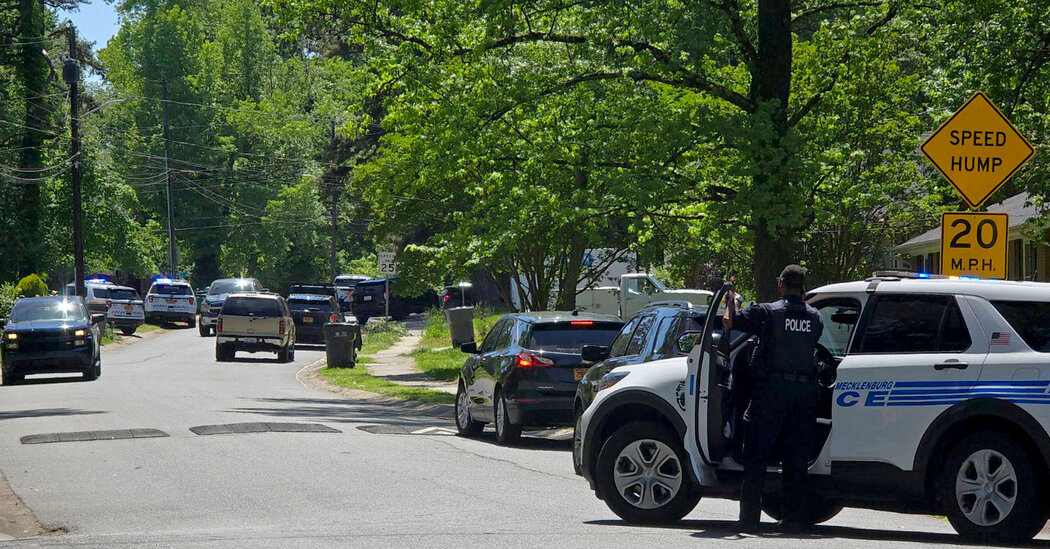In one of the deadliest days for law enforcement in recent years, three members of a U.S. Marshals fugitive task force were shot and killed in Charlotte, N.C., on Monday, as they tried to serve a warrant and were met by gunfire, the police said. Five other law enforcement officers were also shot, and one was in critical condition Monday evening. The suspect they were seeking was also killed.
Around 1:30 p.m., members of the task force went to the 5000 block of Galway Drive to serve a warrant on a person for being a felon in possession of a firearm, Johnny Jennings, the chief of police for the Charlotte-Mecklenburg Police Department, said at a news conference Monday evening.
When they approached the person, the shooter fired at them. The officers returned fire and struck the person, who was later pronounced dead in the front yard of the residence. The police did not release the name of the shooter or any of the law enforcement officers.
As police approached the shooter, Chief Jennings told reporters, the officers were met with more gunfire from inside the home. Two people inside were taken to the station as “persons of interest,” and one of them was a 17-year-old, Chief Jennings said.
“Today is an absolute tragic day for the city of Charlotte and for the profession of law enforcement,” Chief Jennings said. “Today, we lost some heroes that are out simply trying to keep our community safe.”
In all, four members of the task force were shot, three of whom died. The U.S. Marshals Service confirmed that one of its deputy marshals was among those killed. The affiliations of the other two who died were not released. The task force is made up of officers from multiple agencies.
Four members of the Charlotte-Mecklenburg Police Department were also shot and injured. One of them was in critical condition, the police said.
The authorities shut down the city’s Shannon Park neighborhood, east of downtown, on Monday afternoon in order to more easily move victims to hospitals, the Charlotte-Mecklenburg Police Department wrote on social media.
Gov. Roy Cooper of North Carolina said on social media that he was in contact with law enforcement agencies, and he offered the help of state resources.
Vi Lyles, the mayor of Charlotte, said at the news conference: “These are people that care deeply about what they’ve done for a profession. And now today, we have to say to them how much we are grateful for what they have done.”
The violent episode on Monday was one of the deadliest attacks on law enforcement in recent years. In July 2016, five officers were killed in Texas after an armed sniper opened fire in downtown Dallas during a demonstration against fatal police shootings. Four Dallas police officers and one transit officer were killed. The police killed the gunman, Micah Johnson, 25, with an explosive sent by a remote-controlled robot.
That same month, three officers in Baton Rouge, La., were killed, and three others were wounded in what the authorities described as an “ambush.” The gunman was killed during a shootout.
In February, two police officers and a paramedic were killed near Minneapolis after a man, who was barricaded in his home, opened fire on the police. Officers returned fire, and the gunman was later reported dead.
Last month, two police officers were killed outside a home near Syracuse, N.Y., during a shootout after they were following up on a traffic violation. The suspect also died in the shootout.
Glenn Thrush and Jesus Jiménez contributed reporting and Kirsten Noyes contributed research.
This is a developing story.

